Key takeaways:
- Data visualization enhances understanding by transforming complex datasets into clear visuals, enabling informed discussions and decisions in surgical practices.
- Analyzing surgical trends with data uncovers patterns that can lead to improved patient outcomes and more effective resource allocation.
- Tools like Tableau, Microsoft Power BI, and programming languages such as R and Python are essential for creating impactful visual narratives from data.
- Practical applications of data visualization, such as analyzing complication rates and preoperative factors, significantly aid in making better surgical decisions.
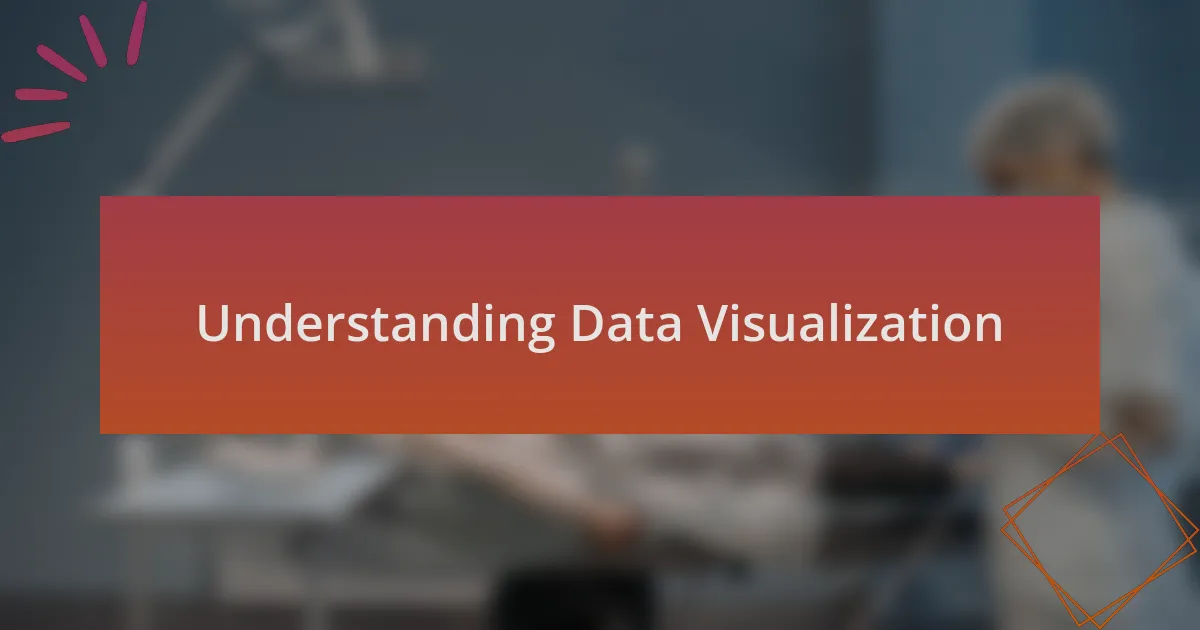
Understanding Data Visualization
Data visualization transforms complex datasets into relatable visuals, allowing us to grasp intricate patterns and trends quickly. I remember the first time I used a graph to make sense of patient recovery rates. The visual representation made it crystal clear which treatments were more effective, sparking a deeper conversation among colleagues about improvements we could implement.
As I’ve delved deeper into data visualization, I’ve realized that the right visual can convey so much more than raw numbers ever could. Have you ever been overwhelmed by a spreadsheet filled with data? It’s easy to lose the narrative behind the figures. But once I started using charts and diagrams, I was able to tell a compelling story about patient outcomes that truly resonated with my team.
The emotional impact of effective data visualization shouldn’t be underestimated; it can drive decisions, inspire action, and even improve patient care. When I presented a colorful infographic at a recent meeting, I could feel the energy shift in the room. It wasn’t just about numbers anymore; it was about lives and outcomes. The visuals invited engagement and discussion in a way that plain text could never achieve.
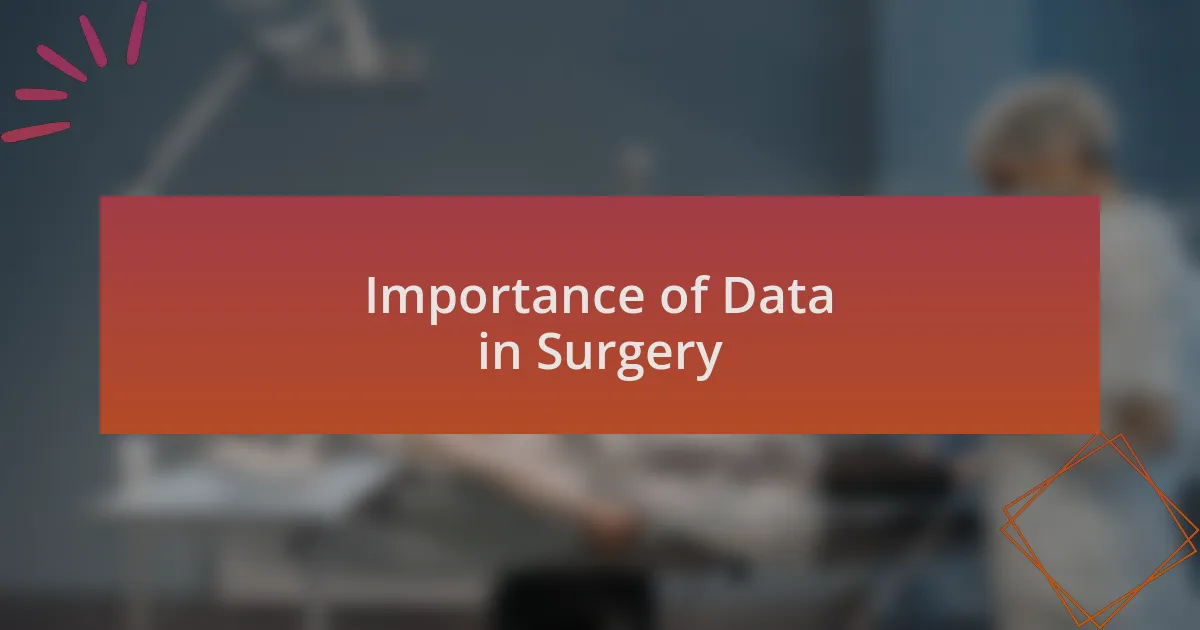
Importance of Data in Surgery
Data plays a crucial role in surgical practices, enhancing decision-making processes and patient care. I often recall a case where we had a surge in post-operative infections. Diving into the data helped us identify a specific surgical procedure that correlated with higher infection rates. This understanding prompted us to re-evaluate our protocols, ultimately benefiting patient safety significantly.
One might wonder how surgeons ever managed before the data boom. I used to rely heavily on intuition, but now, having access to detailed analytics has been a game changer. Just last month, we utilized patient demographics and surgical outcomes data to refine our approach to elective surgeries, leading to a noticeable improvement in recovery times across various age groups.
Leveraging data not only enhances surgical outcomes but also fosters a culture of continuous improvement within the team. After analyzing trends from past surgeries, I organized a workshop where we could collaboratively discuss findings and brainstorm innovative solutions. That session was a testament to how data can build stronger collaborative efforts, making all of us more proactive in our surgical approaches.
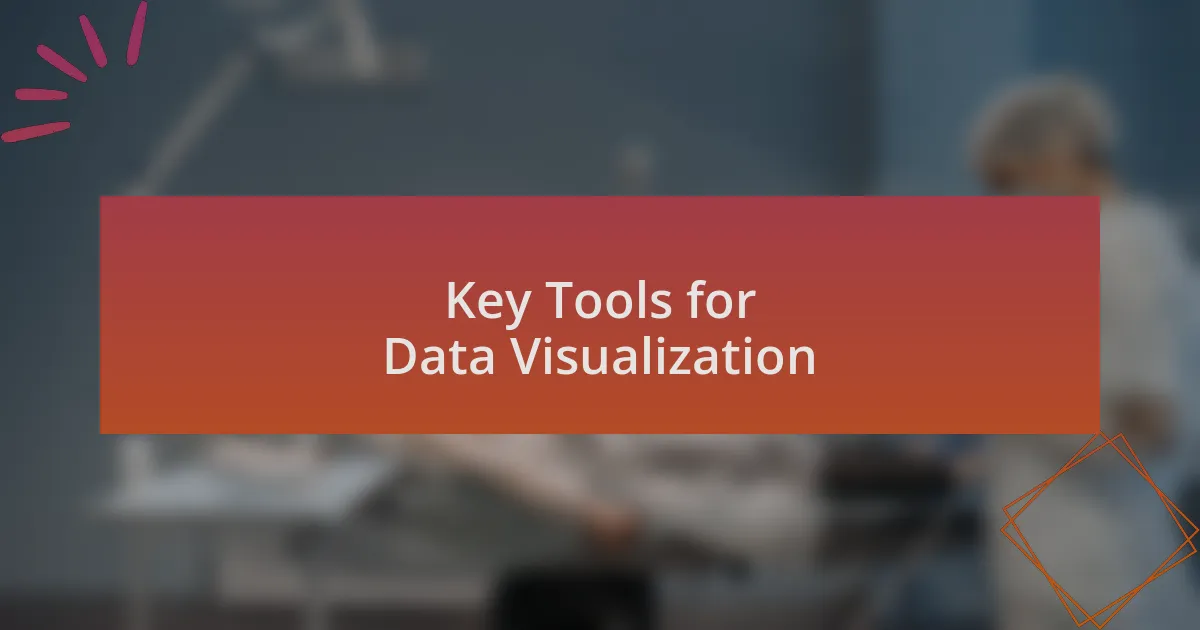
Key Tools for Data Visualization
When it comes to data visualization, I frequently turn to tools like Tableau and Microsoft Power BI. Both have user-friendly interfaces that allow me to create compelling visual narratives from complex datasets. I vividly remember a time when I transformed a confusing spreadsheet into a clear dashboard that showed trends in surgical complications over time. That moment illustrated just how powerful visualizing data can be in informing our surgical strategies.
Additionally, I find R and Python particularly valuable for more advanced data manipulation and visualization. Their libraries like ggplot2 and Matplotlib truly unleash my ability to customize data displays to fit specific research questions. Using these tools, I once crafted a custom plot that illustrated the relationship between surgical volume and patient outcomes, which ultimately fueled our discussions on resource allocation in the operating room.
Finally, my experience with software like Google Data Studio cannot be understated. This tool has been instrumental for collaborative efforts, allowing team members to contribute directly to our visualizations. In one instance, we hosted a review session where everyone could interact with live data displays, fostering an engaging environment that sparked insightful feedback and ideas for optimizing our practices. Have you ever experienced the thrill of seeing your data come to life in such an interactive way? It’s moments like those that make data visualization a vital part of our decision-making arsenal.
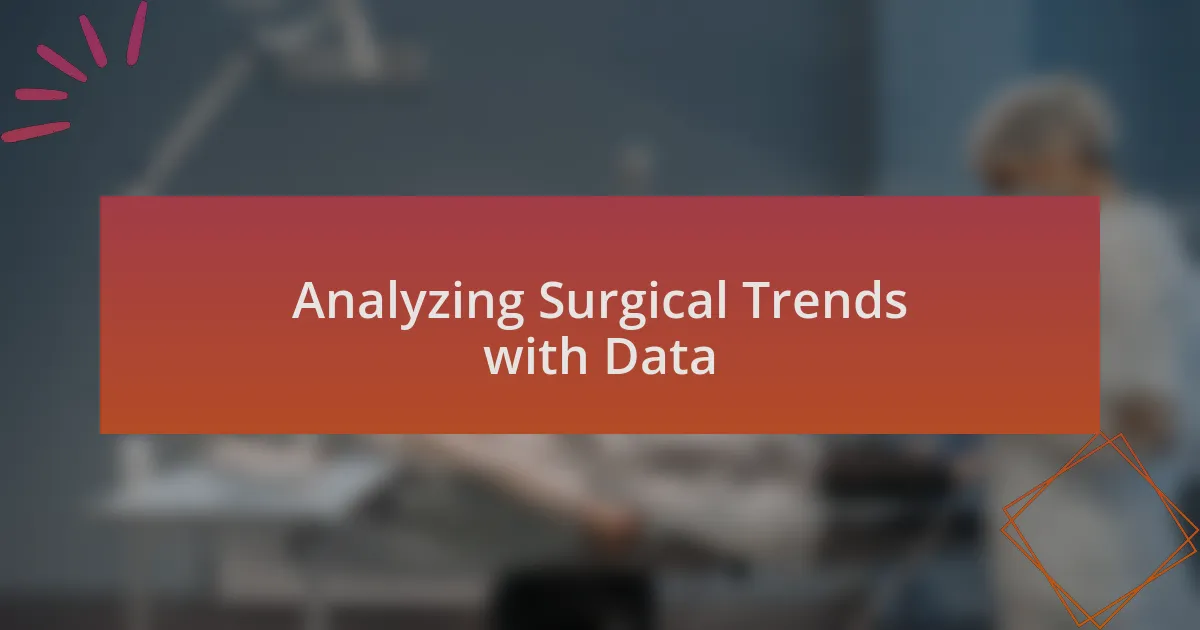
Analyzing Surgical Trends with Data
Analyzing surgical trends through data allows me to uncover patterns that may not be immediately evident. For example, when I recently examined data on minimally invasive surgeries, I noticed a steady increase in their success rates over the years. This insight led to fruitful discussions within our team about incorporating these techniques more broadly, as we realized their potential to improve patient outcomes and reduce recovery times.
I vividly recall a project focused on complication rates across different surgical specialties. By visualizing this data, I identified unexpected spikes in certain areas, prompting deeper investigation into potential causes. It was eye-opening to see how one seemingly minor variable—like the experience of the surgical team—could significantly influence outcomes. Have you ever stumbled upon a revelation in your data that shifted your entire perspective? Those moments are transformative, driving me to refine our practices continually.
Furthermore, I often leverage historical data trends to forecast future surgical needs in our department. By analyzing the seasonal variations in patient admissions for elective surgeries, I was able to advocate for more strategic scheduling. This proactive approach not only optimizes our resources but also reassures patients about the availability of timely surgical care, which I believe is essential in today’s healthcare landscape. How do you use data to shape your surgical strategies? It’s a dynamic dialogue worth having.
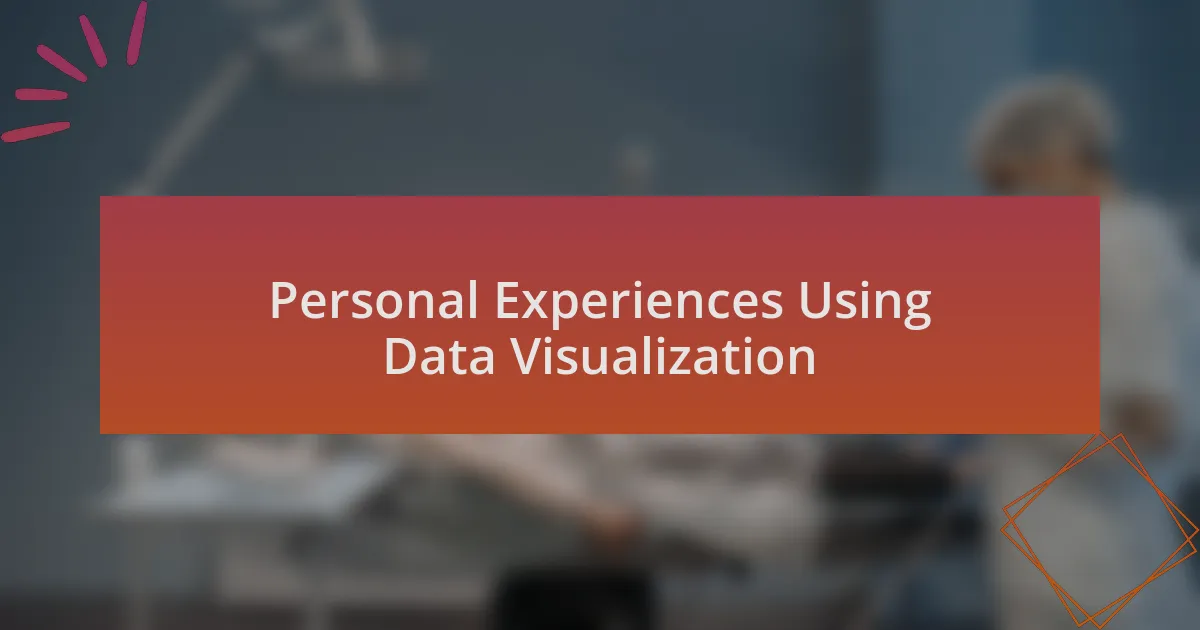
Personal Experiences Using Data Visualization
When I first started utilizing data visualization, I remember feeling overwhelmed by the sheer amount of information available. However, creating simple charts helped me break down complex datasets into understandable visuals. I can still recall the satisfaction I felt when my team could finally grasp the trends in surgical outcomes without wading through endless spreadsheets.
One particularly memorable experience involved presenting data on surgical wait times. I created a dashboard that highlighted not only the averages but also the variation across different procedures. The surprise on my colleagues’ faces was palpable when we saw that certain specialties consistently lagged behind while others thrived. It sparked a passionate discussion about how we could address these discrepancies and implement solutions quickly. Have you ever been surprised by the story your data tells?
In another instance, I used heat maps to visualize patient demographics and their surgical needs. By doing so, I discovered areas where care was lacking, allowing us to better target our outreach efforts. This not only connected us with those in need but also reinforced my belief that data-driven decisions can directly impact patient care. There’s something deeply gratifying about knowing that our analyses lead to tangible improvements in people’s lives, isn’t there?

Practical Applications for Surgical Decisions
One practical application of data visualization in surgical decisions lies in analyzing postoperative complications. I once created a detailed scatter plot that displayed complication rates against various surgical techniques used within our department. It was eye-opening to see patterns emerge, especially when certain methods consistently resulted in higher complication rates. Recognizing these trends allowed us to refine our approaches and improve patient outcomes significantly.
In another scenario, I developed a bar graph that compared preoperative risk factors with surgical success rates. This visualization revealed correlations I hadn’t considered before. It was fascinating to witness my colleagues’ reactions; they suddenly grasped the impact of specific factors on surgical outcomes. Seeing the lightbulb moments among team members reinforced my belief in the transformative power of data visualization for making informed decisions in surgical care.
Furthermore, I recently curated a timeline that illustrated the evolution of surgical techniques over the last decade. By clearly marking advancements alongside reported success rates, my team was able to evaluate which innovations were worth pursuing further. Watching the excitement in our discussions as we identified promising new techniques was incredibly rewarding. Have you ever felt that rush when data not only informs but inspires action?